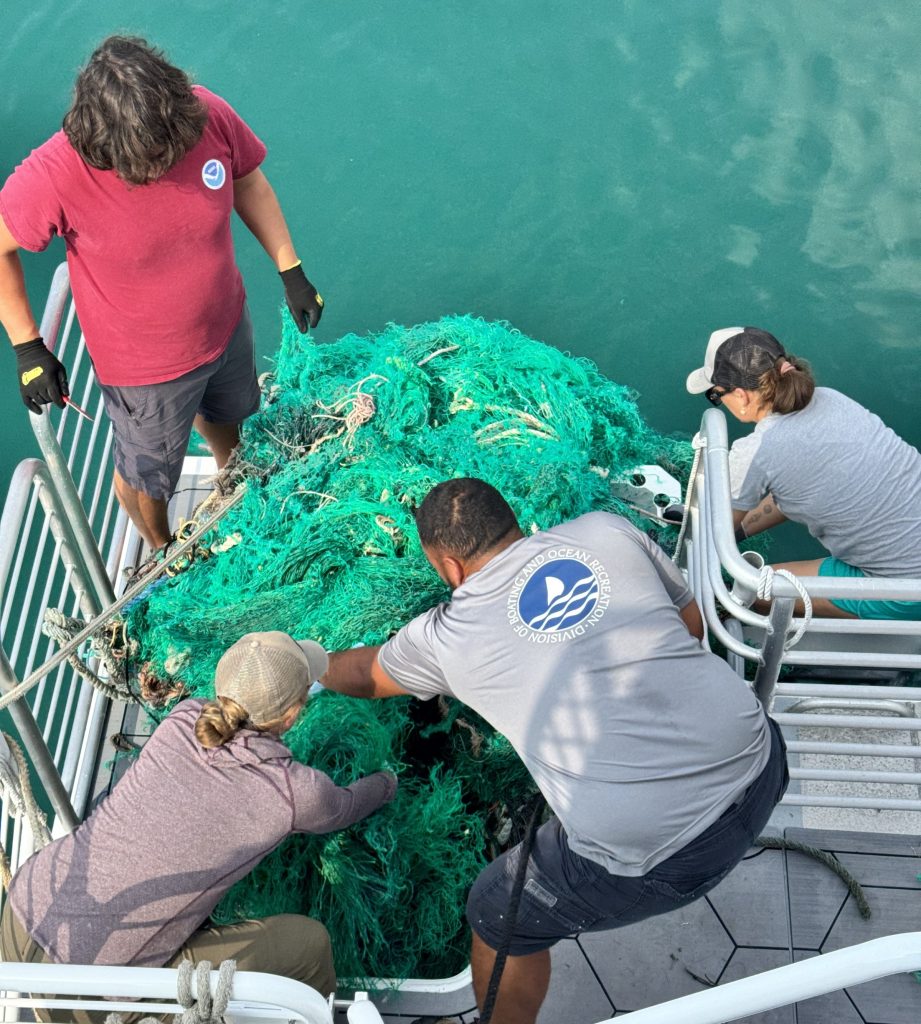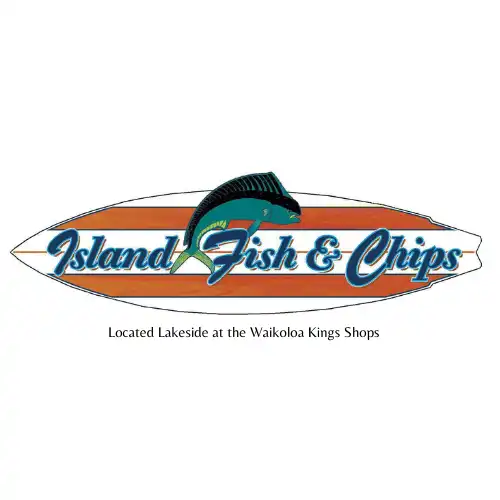On the job conservation: Hawaiian Adventures Kona recovers large ghost net during whale watching tour

A trip that began as a regular daily whale watching tour last week off the Kona Coast ended as a lesson about conservation and stewardship along with raising awareness about the importance of protecting the marine environment.
Kona waters are renowned for their diversity. They are home to several types of whales along with other ocean animals such as porpoises, manta rays, sea turtles, coral and more than 1,100 species of fish, nearly 150 of which are native only to Hawai’i.
Hawaiian Adventures Kona has run whale watching tours and other experiences for more than 25 in those waters off the west side of the Big Island.
Crew members of the company’s vessel Artemis, a 46-foot aluminum catamaran and newest member of the Hawaiian Adventures Kona fleet, were treating guests to views of Hawai‘i’s seasonal humpback whale visitors as well as short-finned pilot whales during one of its daily tours Feb. 6.
Amid some awesome encounters, Capt. Andrew Aggergaard — whose third-generation whale watching family owns Hawaiian Adventures Kona — and naturalist Olivia Miller spotted something that instead of inspiring awe was much more disheartening.
The Hawaiian Adventures Kona team upon further inspection discovered it was a green mass of derelict fishing gear — essentially garbage — floating and drifting in offshore waters.
Called “ghost nets,” these masses are large tangled and knotted clumps of lost or discarded fishing nets, traps, pots and other equipment that haunt Hawai‘i waters and others around the Pacific Ocean.
They make up a large portion of marine debris and pose a massive threat to ocean life.
Ghost nets can harm coral reefs and entrap fish, sharks, turtles, dolphins and even larger cetaceans such as whales.
“Marine debris has harmed and killed countless species of dolphins, whales, fish, seabirds and other aquatic creatures, as well as our endangered Hawaiian monk seals and hawksbill sea turtles, and threatened green sea turtles,” says the Hawai‘i Department of Land and Natural Resources Division of Aquatic Resources website. “Derelict fishing gear such as large fishing nets, rope and line are also hazardous for Hawai’i’s coral reefs — as it can smother, snag and break corals that are such an important part of the nearshore ecosystem.”
Ghost nets also are a safety hazard for vessels, able to cause severe damage just by becoming entangled in propellers and around hulls.
Aggergaard and Miller took a detour — with the full support of their patient guests, who also offered their encouragement — to where the green ghost net mass was floating.
They were able to pull it out of the water and onto the back swimstep of the Artemis.
A team from the Division of Aquatic Rsources and state Land Department Division of Boating and Ocean Recreation helped properly dispose of the tangled mess of garbage once the Hawaiian Adventures Kona vessel, its crew and guests returned to Honokōhau Small Boat Harbor, ensuring it no longer threatens marine life.
Organizations participating in the state’s Marine Debris Rapid Response Program as of July last year had collectively removed a total of 100,000 pounds of marine debris from Hawai‘i coastlines, reefs and ocean waters so far since the response progam was organized in 2020 by the Division of Aquatic Resources.

The Center for Marine Debris Research at Hawai‘i Pacific University in Honolulu reported it received the first of two 20-foot containers of derelict fishing gear — estimated to weigh about 22,000 pounds — collected by its partner Surfrider Kaua‘i between July 2024 and January.
O‘ahu commercial fisherman Hank Lynch has removed the trash from ocean waters on his own for more than 15 years.
He now participates in the Center for Marine Debris Research bounty collection program that pays anglers per pound for derelict fishing gear they remove and collect from the ocean.
“This isn’t fishing debris from Hawai‘i,” Lynch told Hawai‘i News Now in October 2023. “There’s certainly a small amount of stuff that’s from Hawai‘i, but more than 90% of it, much more than 90% of it, is from somewhere else. So it’s someone else’s trash that’s drifting close to Hawai‘i.”
The O‘ahu news station reported much of the debris finds its way to the islands from thousands of miles away in an area of the North Pacific often referred to by media as the Great Pacific Garbage Patch.
Fortunately, there are people such as Lynch and businesses like Hawaiian Adventures Kona willing to step up to help clean up Hawai‘i’s ocean waters, protect them for the future and teach others why it’s crucial that the problem of marine debris, including ghost nets, needs to be addressed sooner than later.
“The Hawaiian Adventures team is passionate about providing educational experiences on their adventures, and ocean cleanup is one of the most rewarding parts of the job,” said the Kona tour company in a press release. “They will continue to instill greater respect and understanding of the ocean on every tour, and act on opportunities to recover marine debris from Kona’s waters.”

Team members hope the business can inspire that respect for marine life — a respect embodied by the Kona community — in everyone who steps foot on their tour boats.
“We are excited to be a part of a community that understands the health of our oceans is tantamount to our own well-being, and play our part to promote this mindset,” says Hawaiian Adventures Kona on its website.
To report marine debris you cannot remove yourself, visit the Division of Boating and Ocean Recreation website.
Report entangled marine animals immediately — any time around the clock — by calling the National Oceanic and Atmospheric Administration at 1-888-256-9840.
Sponsored Content
Comments














